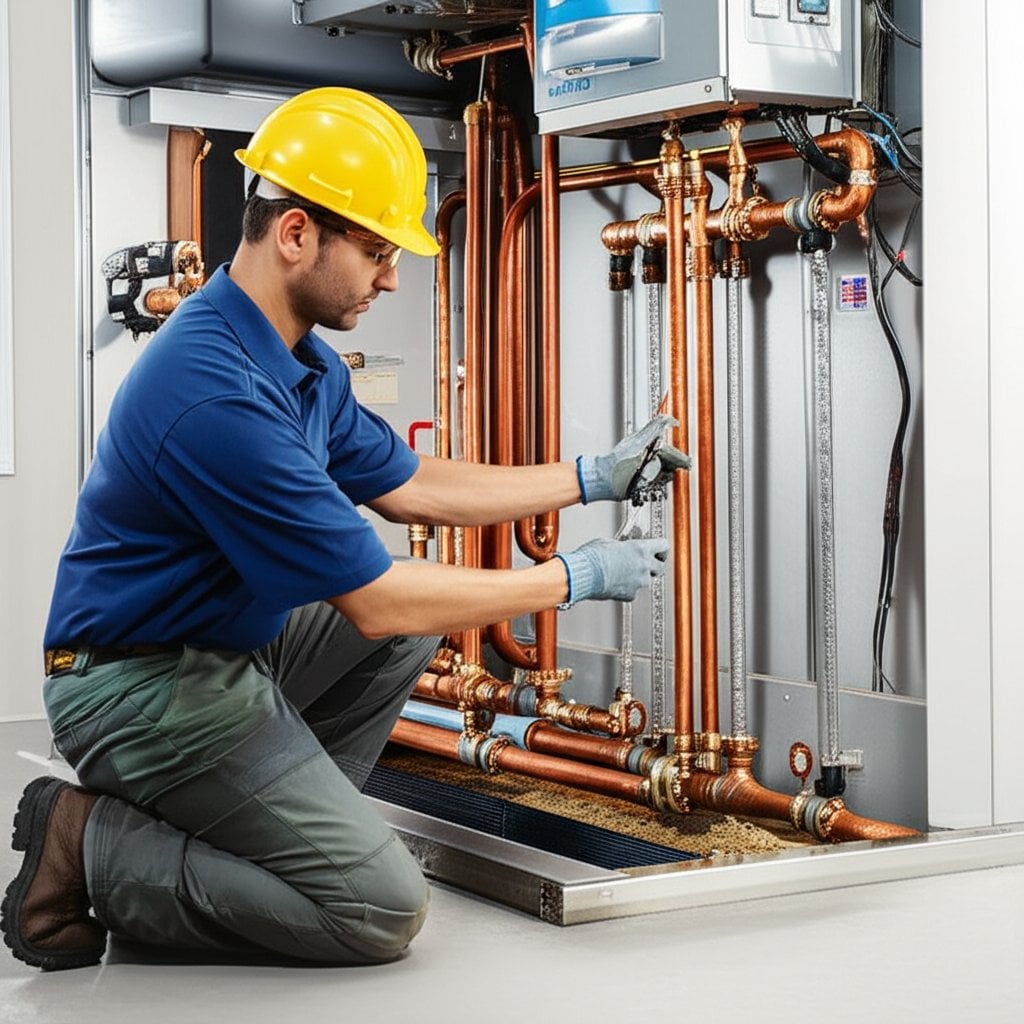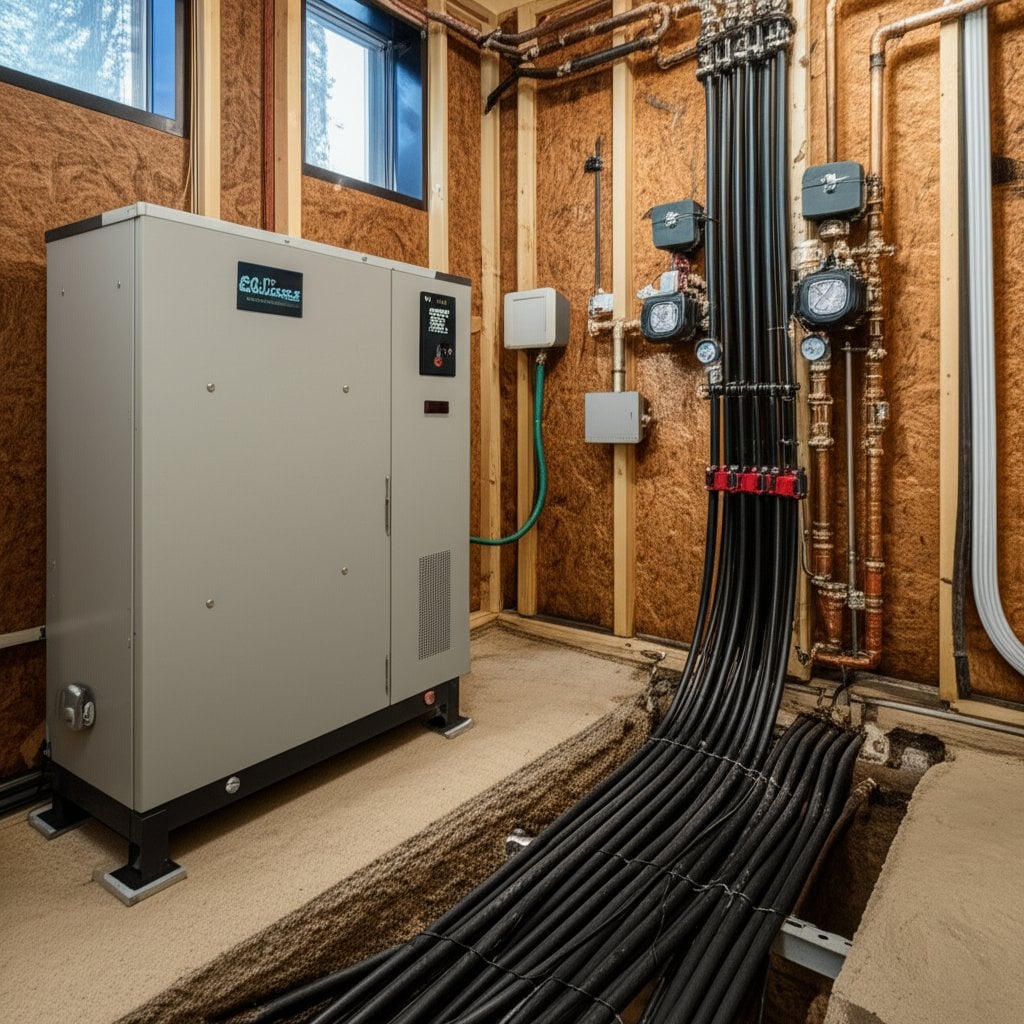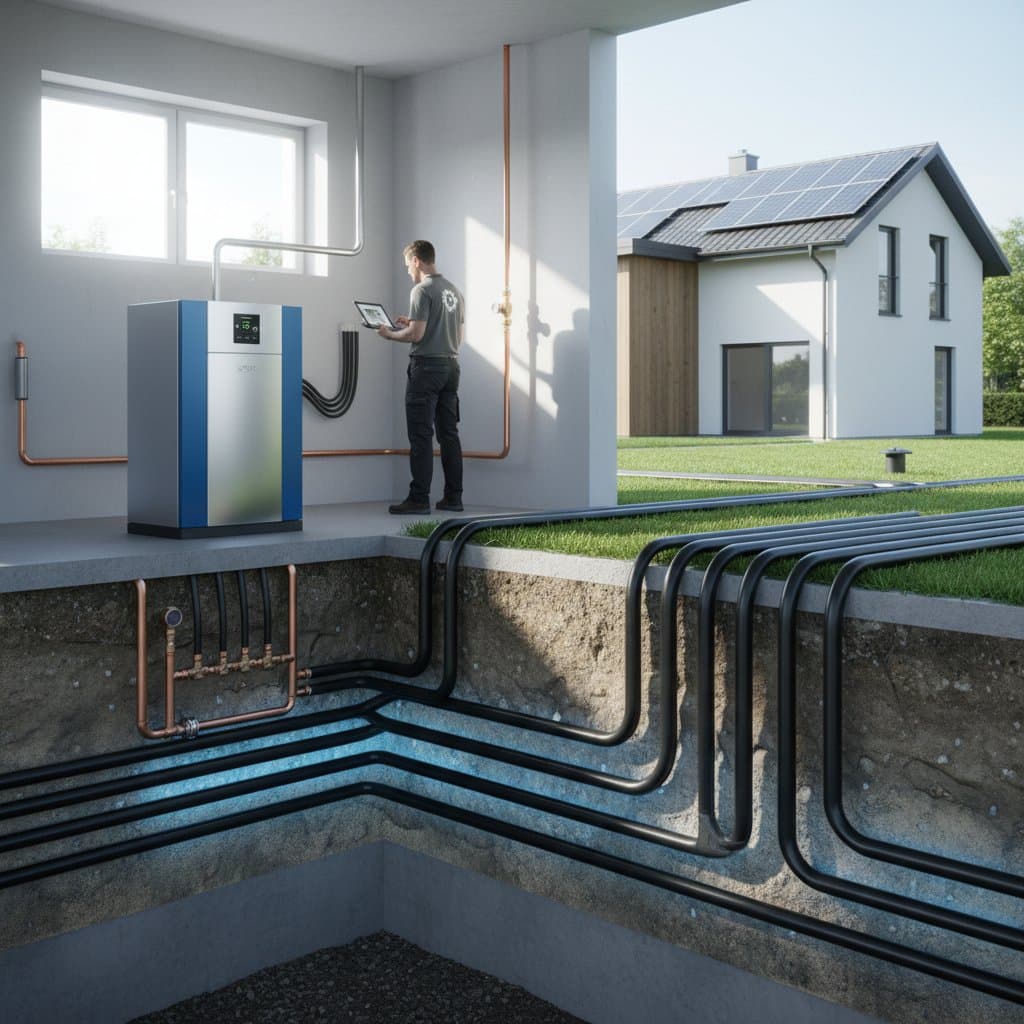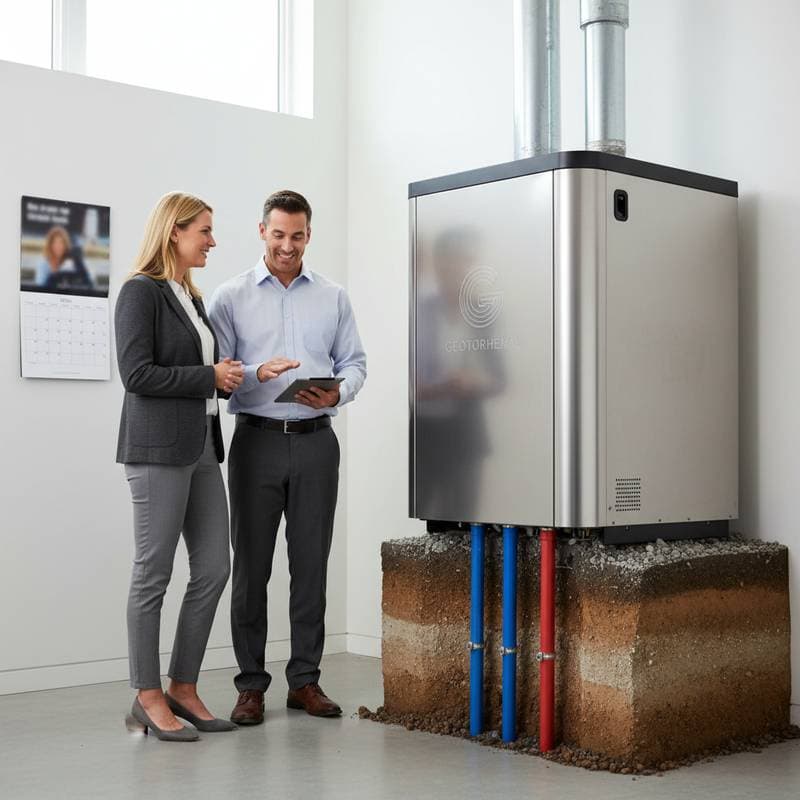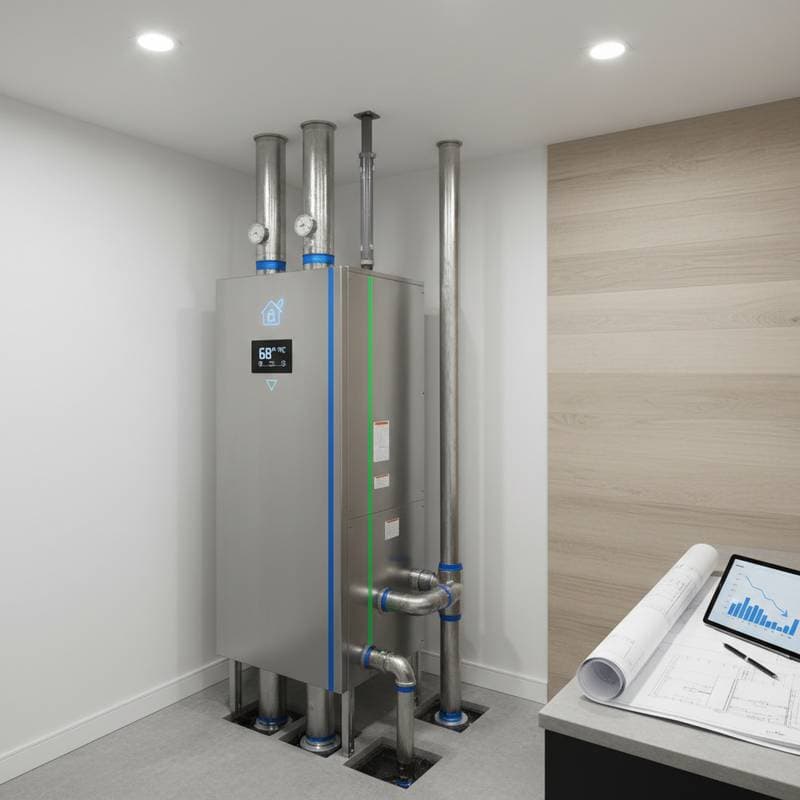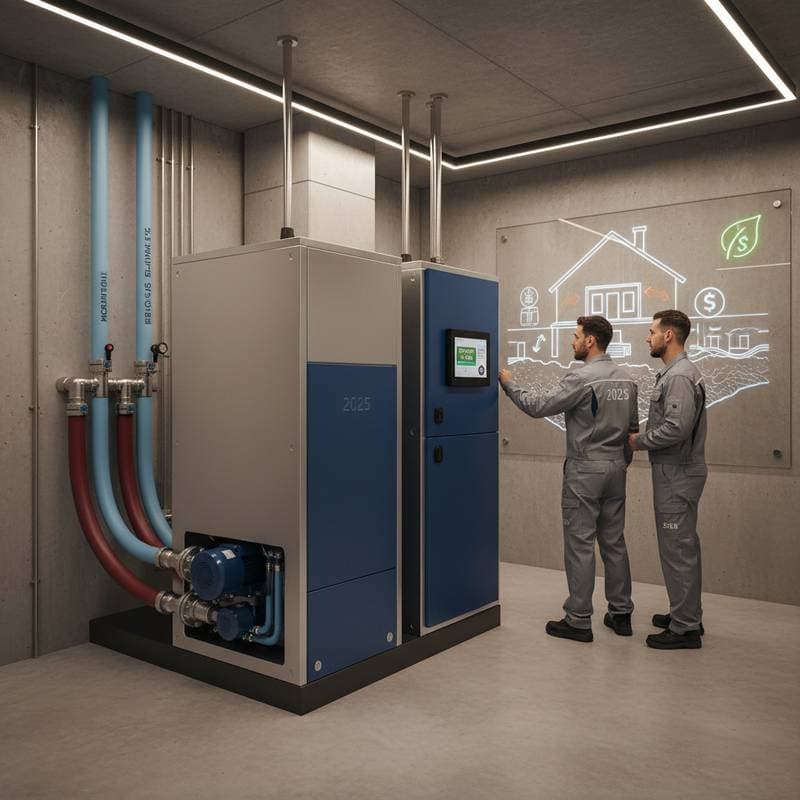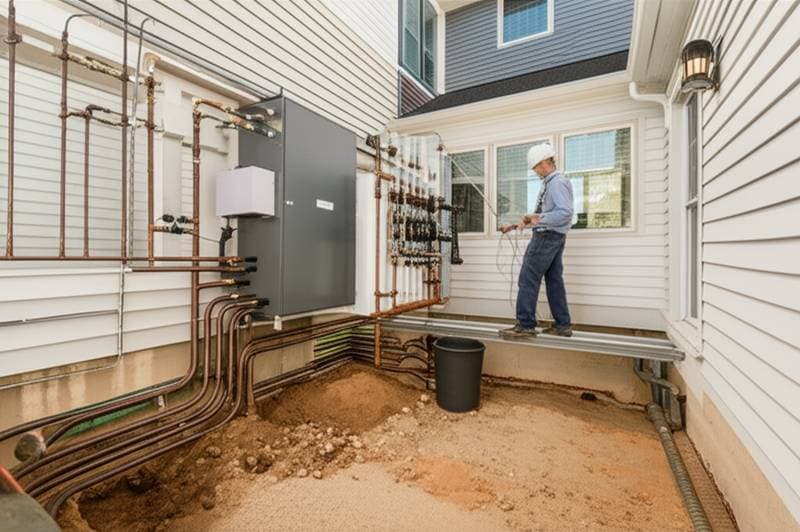Key Points
- Geothermal HVAC systems leverage the earth's consistent underground temperatures to provide heating and cooling, resulting in substantial reductions in energy expenses.
- Although initial installation expenses exceed those of conventional systems, long-term savings range from 40 to 70 percent over the system's lifespan.
- Recent technological advancements and expanded financial incentives enhance the accessibility and performance of ground-source heat pumps.
- Effective system design, thorough soil evaluation, and appropriate loop configurations determine optimal efficiency and financial returns.
Understanding Geothermal HVAC Fundamentals
Geothermal HVAC systems utilize the stable thermal properties of the earth to maintain indoor comfort. These systems extract heat from the ground during winter months and dissipate excess heat into the soil during summer. This process relies on a network of underground pipes, known as loops, filled with a fluid that circulates to transfer thermal energy to and from the home.
The earth's subsurface maintains a relatively constant temperature, typically between 45 and 75 degrees Fahrenheit, depending on geographic location. This stability allows geothermal systems to operate with minimal energy input compared to air-source alternatives that contend with fluctuating outdoor conditions. Homeowners benefit from consistent performance regardless of seasonal extremes.
Financial Benefits and Long-Term Value
Traditional heating and cooling systems generate temperature changes through combustion or electrical resistance, which demands significant energy consumption. Geothermal heat pumps, however, function as heat transfer devices. They move existing thermal energy rather than producing it, achieving efficiencies that far surpass conventional methods.
Energy cost savings for homeowners average 40 to 70 percent relative to standard HVAC setups. Installation costs vary based on property specifics, such as lot size and soil type, but typically range from 20,000 to 40,000 dollars for a residential system. Financial incentives, including federal tax credits up to 30 percent and state rebates, can reduce this outlay considerably. Payback periods generally span five to ten years, after which the system generates pure savings for its 25- to 50-year service life.
To maximize returns, conduct a detailed energy audit before installation. This assessment identifies baseline consumption and pinpoints areas for optimization, ensuring the system aligns with actual needs.
Essential Planning Factors
Successful geothermal implementation begins with site evaluation. Soil composition plays a critical role in heat transfer efficiency. Sandy or loamy soils facilitate better conductivity than rocky or clay-heavy types. Groundwater presence can enhance performance by providing additional thermal mass, but high water tables may require specialized loop designs to prevent corrosion.
Loop configurations adapt to available space. Vertical loops, drilled 100 to 400 feet deep, suit properties with limited surface area. Horizontal loops, buried four to six feet underground, demand more land but involve simpler excavation. Slanted or pond loops offer alternatives for unique terrains, such as waterfront properties.
System sizing demands precision. Engage a certified professional to perform Manual J load calculations, which account for home insulation, window efficiency, and occupancy patterns. An undersized unit fails to meet demands, while an oversized one cycles inefficiently, increasing wear and costs.
Budget for ancillary components, including desuperheaters that supply domestic hot water or hybrid setups that integrate with existing furnaces for peak loads. These additions enhance versatility and further reduce operational expenses.
Technological Advancements and Efficiency Metrics
Modern geothermal systems achieve coefficient of performance (COP) ratings of 3.0 to 5.0, indicating that for every unit of electricity consumed, the system delivers three to five units of heating or cooling. This contrasts sharply with traditional systems, which rarely exceed 1.0 efficiency due to inherent energy losses.
Advancements in variable-speed compressors and smart controls allow dynamic adjustments to load demands, minimizing energy waste. Desiccant wheels and advanced filtration integrate seamlessly, improving air quality and humidity control. These features reduce grid reliance, lower carbon footprints, and eliminate the noise associated with outdoor units.
Integration with renewable sources amplifies benefits. Combining geothermal HVAC with photovoltaic solar arrays enables net-zero energy homes. Battery storage systems store excess solar production for nighttime or cloudy-day use, creating a resilient, off-grid capable setup.
Integration Options for Enhanced Comfort
Geothermal systems pair effectively with radiant floor heating, which distributes warmth evenly without drafts. This method uses the earth's steady temperatures to maintain toasty floors, ideal for cold climates. Zoned ductwork allows individualized temperature control in different rooms, preventing overcooling or overheating unused spaces.
For humid regions, incorporate dehumidification modules to extract moisture efficiently. Smart thermostats with geofencing technology adjust settings based on occupancy, further conserving energy. These enhancements transform the system into a comprehensive climate management solution.
Maintenance Strategies for Longevity
Geothermal systems demand routine care to sustain efficiency. Schedule annual professional inspections to check refrigerant levels, pump operation, and loop integrity. Replace air filters every three months to ensure unobstructed airflow and prevent strain on components.
Monitor ground loop performance through pressure tests every five years. Address any sediment buildup in the fluid lines promptly to avoid reduced heat transfer. Maintain landscaping around loop fields to prevent root intrusion or soil compaction that could impede operations.
Document all service records meticulously. This practice supports warranty claims, typically covering indoor units for 10 years and loops for 50 years. Well-maintained systems retain higher resale value, appealing to eco-conscious buyers.
Realizing Sustainable Home Comfort
Adopting geothermal HVAC represents a strategic commitment to efficiency and environmental stewardship. Homeowners gain reliable, whisper-quiet climate control that aligns with rising energy costs and sustainability goals. The technology harnesses an abundant, renewable resource directly beneath the property, fostering energy independence.
Beyond financial savings, these systems contribute to broader ecological benefits by curtailing fossil fuel dependence and emissions. As infrastructure evolves toward resilience, geothermal installations position homes at the forefront of green innovation. Evaluate your property today to unlock the earth's potential for enduring comfort and savings.


